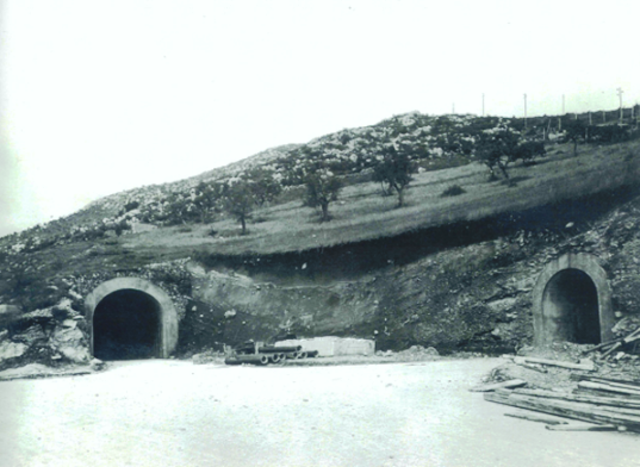The Soratte bunker
A mountain of history

The entrances to the tunnels of the Monte Soratte bunker during the construction phase between the late 1930s and early 1940s. - Wikimedia Commons
On Mount Soratte, near Rome, it is possible to visit a bunker that stands as one of the largest examples of modern military architecture still accessible today.
The story of this bunker dates back to the 1930s when Benito Mussolini decided to build a shelter that could house him and the government in case of an attack on Rome. He identified Soratte as the ideal location. Construction began in 1939 and involved the creation of a massive four-kilometer-long structure dug into the mountain, capable of sustaining itself by sourcing air and water from the mountain itself. However, Mussolini never saw the bunker completed, nor did he get to use it due to the war's unfolding events. Instead, it was the German army that utilized it when, in 1943, Field Marshal Albert Kesselring decided to use the structure as the headquarters of the Wehrmacht's Supreme Command for Southern Europe, following the Nazi occupation of Italy after September 8th. On May 12, 1944, the bunker was tested with a massive Anglo-American bombing raid that destroyed everything outside but left the internal structure completely intact. In June 1944, with the Allied advance, the Wehrmacht abandoned the bunker, leaving it to be looted by the local population.
After the war, the bunker was used by the Italian Army as an artillery depot, but the facility was given new life in 1963, during the height of the Cold War, when it was chosen by the Italian government and NATO as the site of an anti-nuclear bunker intended to protect the government in case of a nuclear attack on Rome. Consequently, the structure was modernized to make it indestructible, even in the event of a nuclear assault. Fortunately, it was never used for its original purpose, although NATO did use the bunker for various drills before abandoning it in 1993, following the end of the Cold War.
The structure remained abandoned and secret until the early 2000s, when the local community of Sant’Oreste decided to restore it and turn it into a museum open to the public.
Gregory Paolucci and Giuseppe Lo Gaglio, Il Bunker del Soratte - Una montagna di storia, Bunker Soratte-Free Cultural Association of Santoreste, Sant'Oreste, 2013.
Quagliani Jacopo - Graduated in Historical Sciences
2025-05-06
Salvatore Ciccarello
